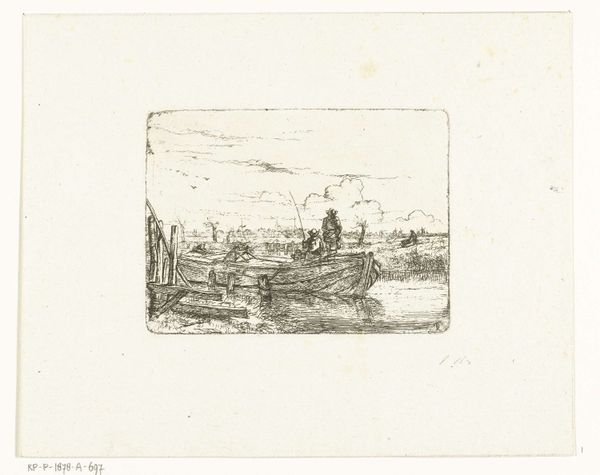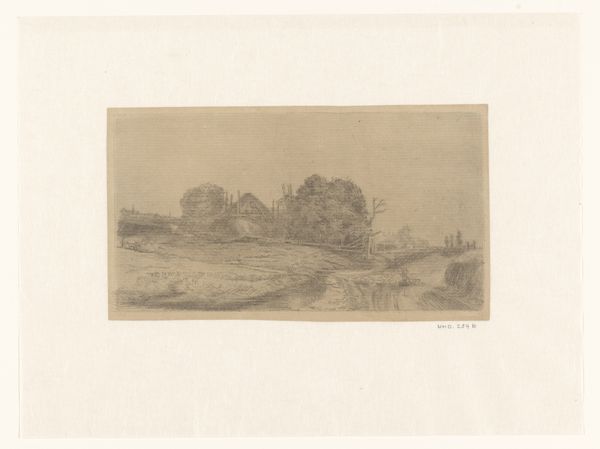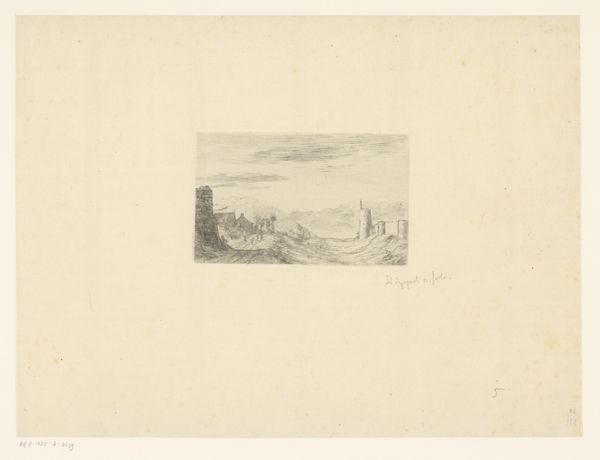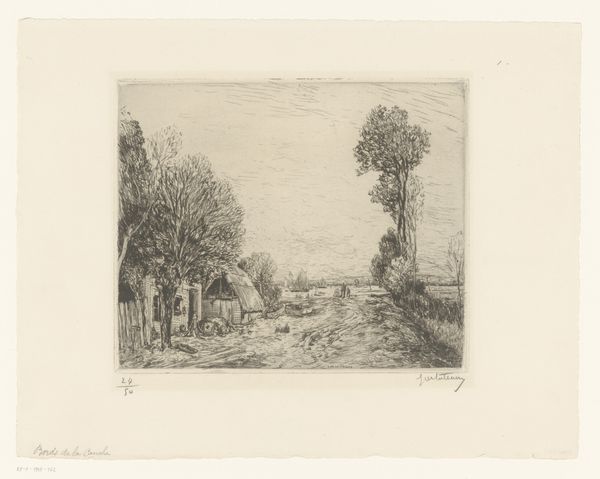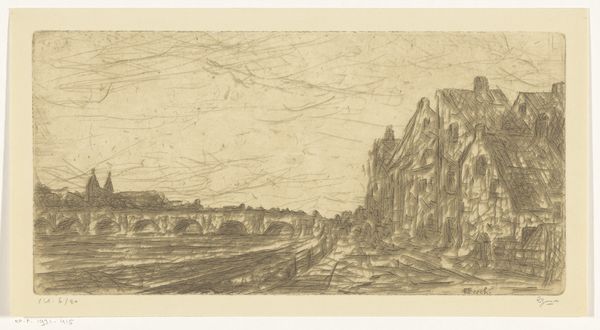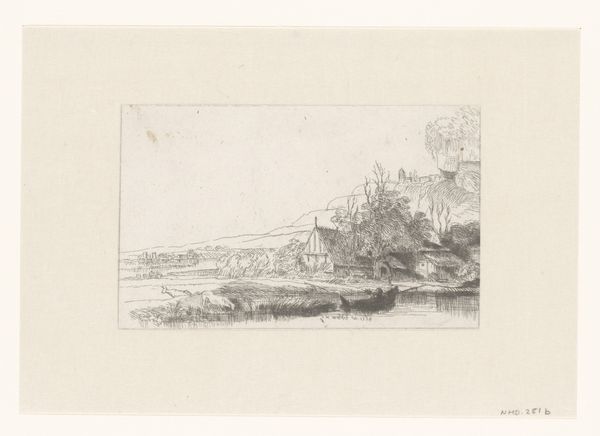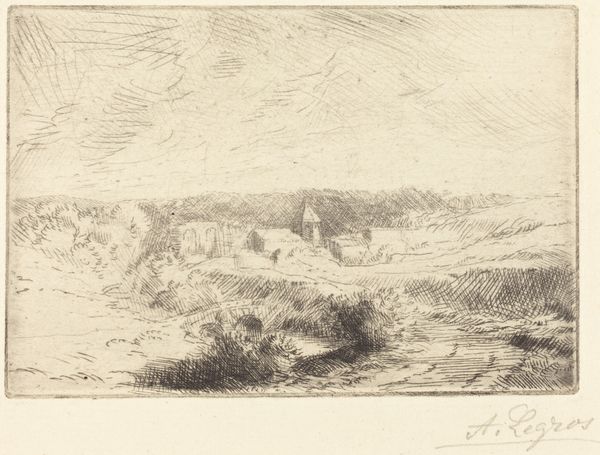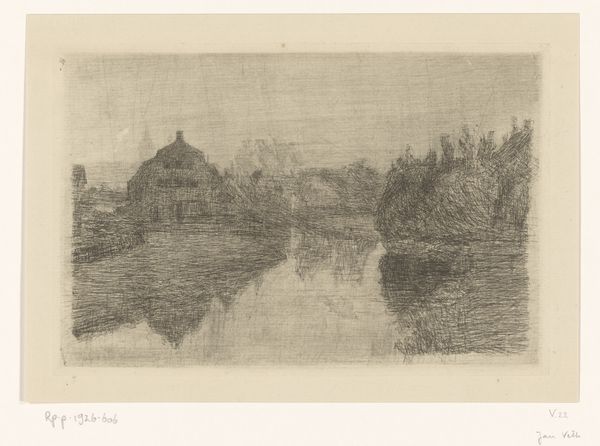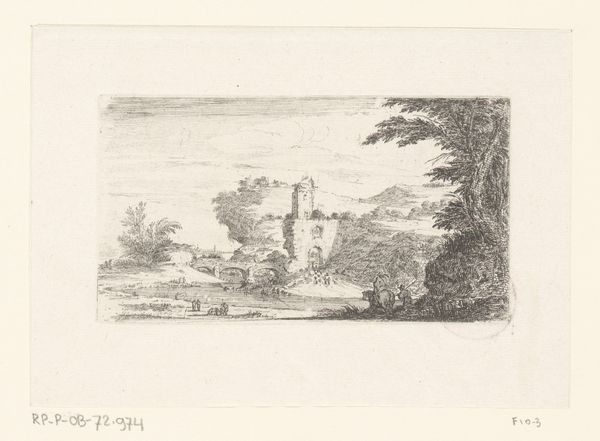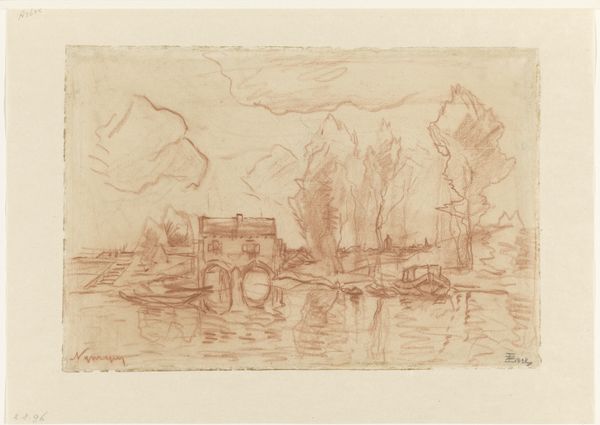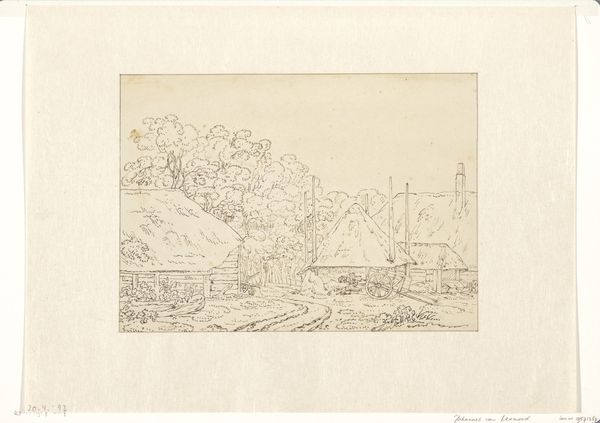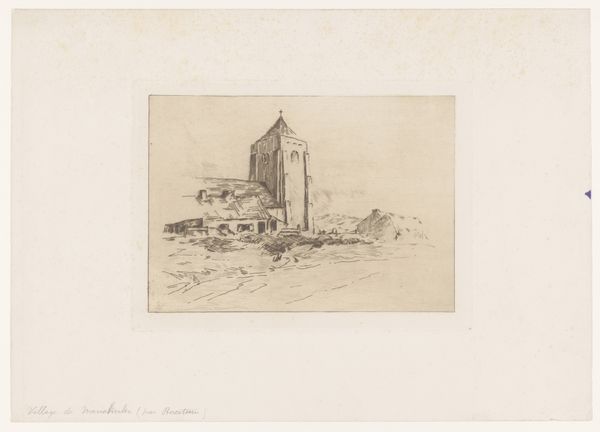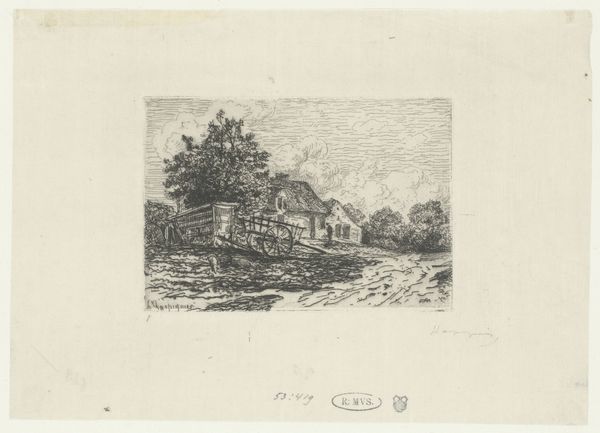
drawing, print, etching
#
drawing
# print
#
etching
#
landscape
#
etching
Dimensions: height 192 mm, width 229 mm
Copyright: Rijks Museum: Open Domain
Curator: This etching, "Onderstuk van een watermolen bij Gouda," or "Lower Part of a Watermill near Gouda," was created by Wijnand Otto Jan Nieuwenkamp sometime after 1911. Editor: It's a beautiful rendering. The monochrome sepia tones create such a rustic, almost dreamlike atmosphere. It feels quiet and serene. Curator: Nieuwenkamp was known for his travels and depictions of architecture. The watermill itself becomes a symbol here—a nexus of industry and nature, drawing heavily on the traditions of Dutch landscape painting. Note how the form suggests both stability and, subtly, decline. Editor: Exactly. You see the human interaction with this natural source. But the decay suggests a changing economy. I’m particularly struck by the detailed work that goes into such a small print – it makes you wonder about the artist’s labor, about the plates, the inking, each careful line etched to form this place. How did Nieuwenkamp’s choices in technique express the transition of industrial life? Curator: In Dutch landscapes, mills often represent national identity, ingenuity, and a harmony with the landscape. The water driving the mill suggests cycles of life and renewal. By choosing a "lower part" view, perhaps Nieuwenkamp suggests a foundational but often unseen aspect of Dutch society—the labor, the mechanics beneath the idyllic surface. Editor: It's amazing how he managed to convey so much textural detail using only etching. Looking at the bridge’s support, you can feel the density and age of that structure. The composition almost elevates the material infrastructure to the role of a symbolic cultural pillar. Curator: Indeed. The watermill isn't just a structure, it becomes a character in this story, embodying memory. Editor: This reminds us that our present landscape is layered with these echoes. The careful craft and perspective of this print offer insight into what might have been considered progressive artistic representation at the time. Curator: It really does. It makes me think about the past. Thank you for shedding light on this. Editor: Absolutely, and it also gives us plenty to reflect on as we examine contemporary approaches to material expression and preservation.
Comments
No comments
Be the first to comment and join the conversation on the ultimate creative platform.
